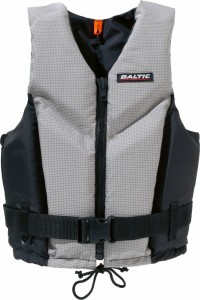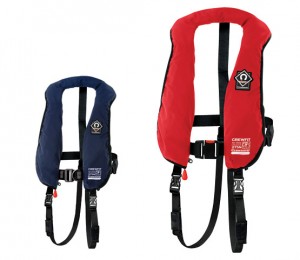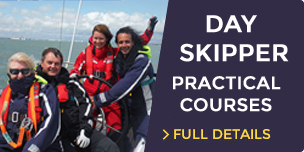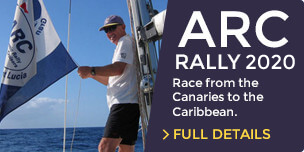What’s the difference between a Buoyancy Aid and a Lifejacket?
13,806 views | June 27th, 2012A buoyancy aid supports the wearer in the water but is not designed like a lifejacket to turn the wearer face up.
Falling or being knocked into the sea causes shock and disorientation so a lifejacket, either permanent foam or gas inflated, will turn an unconscious or incapable person face up.
A lifejacket must have 100 Newtons minimum buoyancy. Buoyancy aids are for use by small craft sailors, canoeists and skiers or wake boarders where being in the water happens frequently, but it is expected that the wearer is prepared for this and is a capable swimmer.
At sea, young children and poor swimmers should always wear a lifejacket.
What size for a Lifejacket or Buoyancy Aid?


It is more important that a lifejacket should be selected for fit and comfort and not to be able to ride up rather than the weight category indicated on the label. For children this is especially true and the lifejacket should never be purchased to “grow into”.
- 50 Newton Class / EN 393 / EN ISO 12402-5
Buoyancy aids and floatation clothing that hold a person afloat with a greater safety margin. Must be used by swimmers only as they do not help you onto a safe back position in the water. For persons 25kg and over. - 100 Newton Class / EN 395 / EN ISO 12402-4
Inherent foam lifejackets with the buoyancy concentrated to the front and collar to help a person turn over onto the safe back position. Suitable for swimmers and non-swimmers. - 150 Newton Class / EN 396 / EN ISO 12402-3
Inflatable lifejackets with good turning capacity when inflated. Can be inflated manually or automatically. For persons 40 kg and over. Quite a few 150N lifejackets are actually 175N but there is no classification for this size. - 275 Newton Class
Inflatable lifejackets with extremely good turning capacity. For industrial and professional use for offshore sailing in severe conditions. Manual or Automatic inflation. For persons 40 kg and over.
What type of inflation?
Manual gas inflation is simple with a very low chance of accidental inflation, but of course means the wearer must remain conscious to activate it.
Automatic gas inflation operates either using a soluble paper or salt tablet or by hydrostatic pressure. The soluble type can sometimes activate in damp conditions if stored wet. They have been known to inflate when flung in a car boot and smothered in wet clothing for example.
The hydrostatic type known as Hammar works on water pressure and will only inflate when submerged over 10cm. There can be no accidental inflation even in extreme
conditions.
All types of gas inflation lifejackets can be inflated orally via a mouth tube.
Other essentials and accessories
The most essential thing is that you wear it! As the RNLI are keen to point out, a lifejacket is useless unless worn.
- Crotch or thigh straps help to prevent a buoyancy aid or lifejacket riding up when floating. These are mostly supplied as standard with a new lifejacket, but are available in case replacements are needed.
- A water activated lifejacket light should be worn especially for coastal and offshore sailing.
- Again for coastal or offshore sailing, a sprayhood is necessary.
- An integral harness allows the wearer to attach themselves to the boat using a safety line.
- Mandatory for racing offshore at night. Some harnesses have a built in stress indicator which shows if they have been overloaded and should be binned.
- Some lifejackets include a lifting strop for hooking up a halyard to help the person back aboard.
- A gas inflating lifejacket needs to have a re-arming kit available onboard so that it can be armed and re-packed after activation.
This is a guest post by Marine Chandlery, online retailer of marine supplies and products. You can see their range of lifejackets and buoyancy aids at www.marinechandlery.com.
Posted by: firstclass








